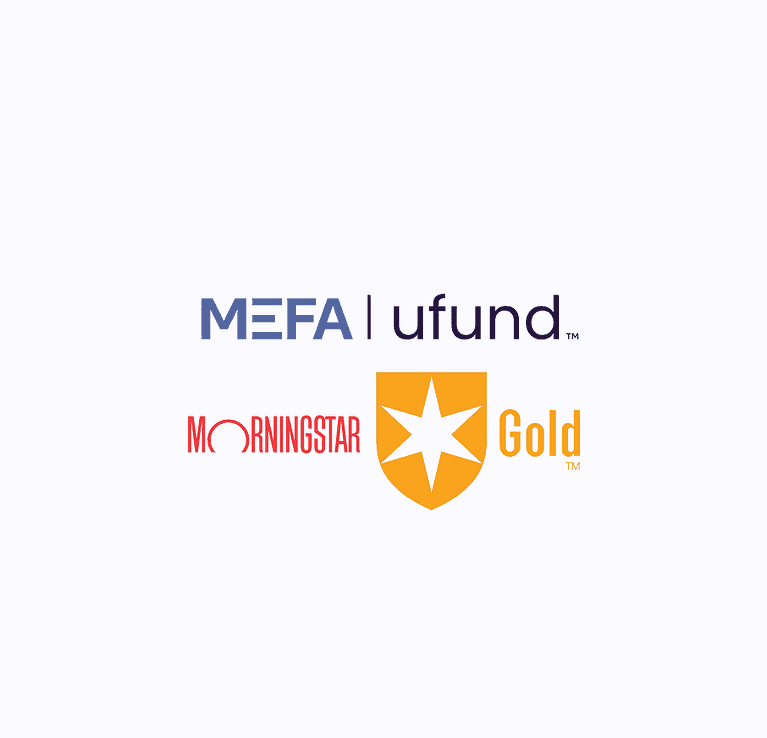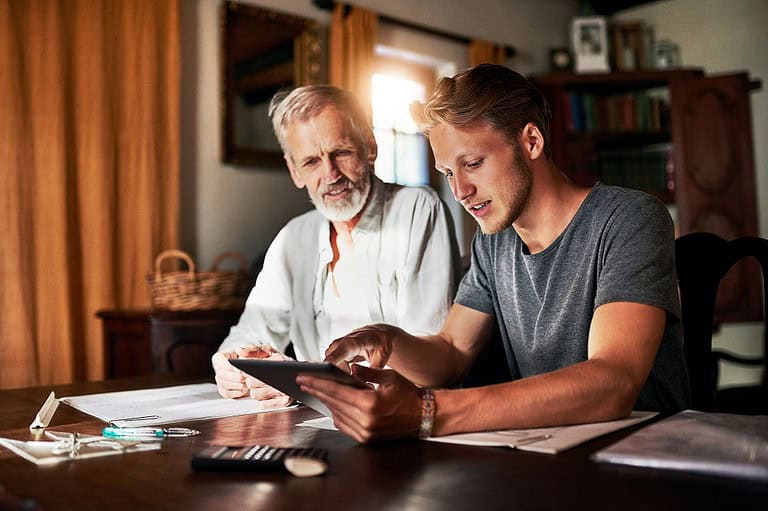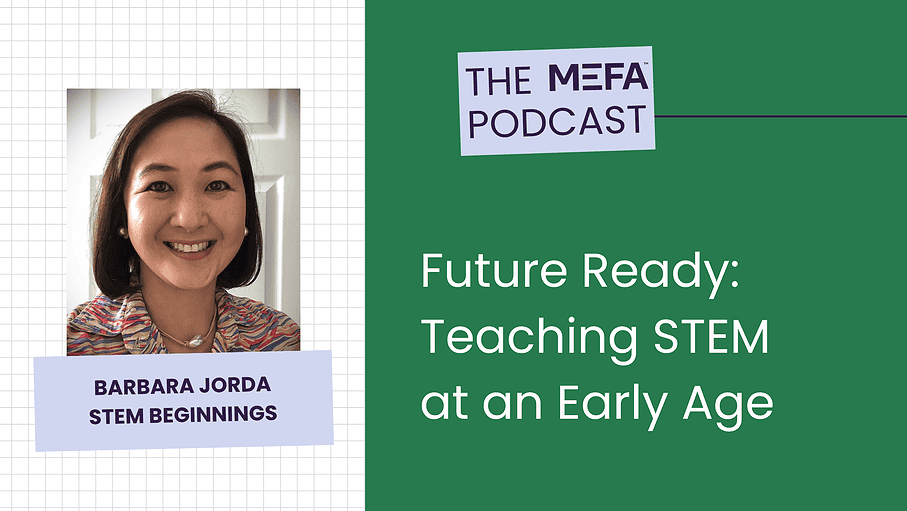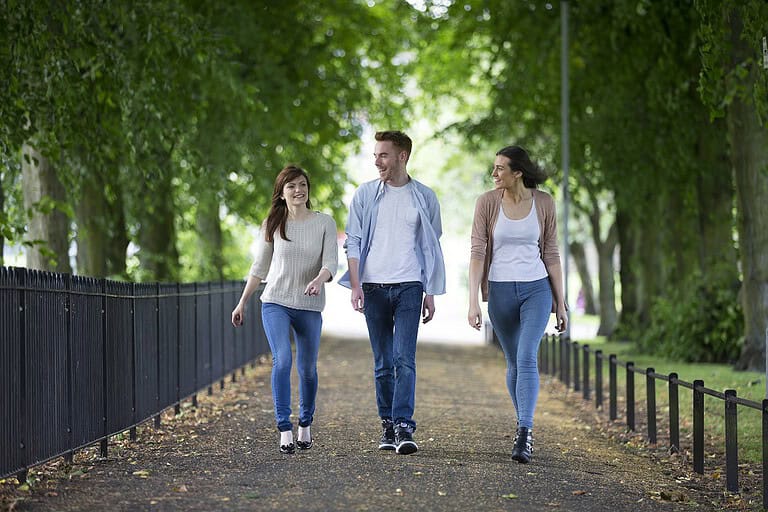Resources Mentioned in this Episode
Barbara Jorda: [00:00:00] Are you ready? Are you ready? S and T and E and M. That is how we spell. S is for science. Science, T is for technology. E for engineering, M for math. STEM is fun for you and me. What will we learn today? Let’s see.
Jonathan Hughes: Hi everyone, and welcome to the MEFA Podcast. My name is Jonathan Hughes, and you just heard from a whole bunch of people. Including our guest on the show today, Barbara Jorda, the co-founder and program director of STEM Beginnings. Now, she was the one leading that song, as you may have guessed, [00:01:00] that audio and video was taken at the public library in the town of Douglas, Massachusetts.
And typically, we talk about college and career readiness on the show to an audience of students or parents of students. Who are getting ready to start that part of their lives. But we at MEFA also touch upon broader educational topics too. And MEFA Pathway, for example, is our college and career portal.
And part of that, especially for kids in earlier grades, is helping to introduce them and getting them to hone the topics that they’re interested in. And one area that you’ve probably heard about over the years is the one that we just heard. A song about and that is stem. And we thought that we would highlight Barbara and her organization’s STEM Beginnings, which brings STEM education to kids as young as two or three.
To help foster the next generation of STEM leaders. So she was good enough to invite us to a lesson that she was doing at the Douglas Public Library, and we’ll [00:02:00] be cutting to that every so often. So if you’re listening instead of watching this episode, that’s what you’re hearing. So you may want to check this one out on our YouTube channel.
So many thanks to her and all the parents and kids that joined us on that day. I’ll be back after the segment to wrap up, but now let’s meet our guest on the show.
Barbara Jorda: So my name is Barbara Georgia and I am the co-founder and program director for STEM Beginnings. I am a mother to two children. I have a 19-year-old now who is a freshman in college and I have a senior in high school.
Jonathan Hughes: What is your education story?
Barbara Jorda: I am a physical therapist by profession. I studied in the Philippines, so I graduated with a degree in physical therapy and I worked as a physical therapist, but my heart wasn’t in there, so I eventually took my master’s in early. Childhood development. So it’s family life and child development at the University of the Philippines.
And that’s where I found my calling. So [00:03:00] back home I started a preschool. It is family owned and family run. It’s still in operation. It’s preschool for children up to six years old I believe. And, I left that in 2006 when we moved here in the us because of my husband’s job. So started a new life here.
I had a two month old baby and a 13 month old baby when we moved here. And yeah, so I was a stay at home mom for several years and I went back to teaching little by little.
Jonathan Hughes: And where does the interest in STEM come from then?
Barbara Jorda: So around. 2013, I think I felt I was ready to teach already to go back to teaching, but around that time there was that push for STEM in the national level already.
So I believe back then, President Obama had this, I think, educate the Innovate program, but it was more geared for high school kids so that you would. [00:04:00] Venture into STEM for college, and so you could end up with STEM profession. So back then when I was thinking of trying to go back, maybe set up a preschool again or something, I thought about STEM and how a lot of times when kids get into middle school, they already tell you, I hate science, I hate math.
So in my mind, I want kids to get started early on and enjoy it, when kids aren’t doing, worksheets when they have, they don’t have to read, workbooks and stuff. Then I get to introduce the concepts of science and math in a fun way, and that’s where I was like, okay, I think this would be good.
And I actually had to consult my own kids. So they were eight and seven years old back then. And that was around the time that we were looking for activities to do. And as a teacher, I was always looking for teachable moments. I always wanted activities where they could learn. But for children, they want things, activities that are fun that they get to do, stuff that there’s craft that they can bring home.
[00:05:00] So it was that I wanted a collaboration between the learning concept and the fund concept. And so that’s where I thought, why don’t we do STEM?
Jonathan Hughes: So what is STEM?
Barbara Jorda: It’s an acronym for science, technology, engineering and math. It’s science is not treated as just science, but it can be you can teach it in collaboration with.
Technology with math and with engineering. As far as little kids are concerned, as you saw, we start off with a song, where kids are able to identify what it is. I tell them that science is a way of thinking. It’s about discovering things, asking question, being curious. And when we say technology, it would be any object or tool that was created to help solve a problem.
It’s a way of doing so. A lot of times I tell them that technology would be anything that’s not nature. So anything that you buy, share of cell phone, a pen, a paperclip, anything that was machine made or manmade that is [00:06:00] created to help solve a problem. So then engineering, I tell them, it’s about problem solving, and I tell them that it’s fulfilling. It’s how you problem solve, how you create things to solve a problem, and how often engineers are the ones creating the technology that we get to use. And when we talk about math, I say it’s a way of measuring. I talk about sorting your toys, talk about measuring learning numbers, doing puzzles counting.
Then when we do our lessons, our STEM lessons, it’s a collaboration of all those four.
Jonathan Hughes: Can you tell me the story of the STEM Beginnings program?
Barbara Jorda: When my kids were eight and seven years old, I think around that time. It was over dinner table, one, one of those times when we were asking them, what do you want to do?
Do you want to do soccer? Do you want to do piano? Things like that. And, I was just. Trying to pick their brains and trying to see what they were into. And as I mentioned earlier, that was also around the time that I wanted to go back to teaching. And I was thinking of having my own [00:07:00] preschool.
And so when we were talking about STEM and how I wanted I was so interested in getting it. For younger kids. That was when it all started. So the kids got so excited and I said, what do you think about, a class where you do experiments, where you do building activity? My, my son back then was all into Legos and he goes, oh and they came up with a name we over dinner table.
I asked him, what do you think would be a good name if we set something up? And, they started. My son was all into Lego, so he maybe brick by brick or something, and we were just brainstorming. Then Brianna, I believe said STEM starters or something like that. And then we all agreed that STEM beginnings was good because they said it’s good to start stem.
Of course, I had to explain to them what STEM was, but starting it off early on. So I think back then, I would be, I think a lot of people thought STEM was just for older people. Older students. I don’t think there was a push much on that [00:08:00] time, around that time, or they, nobody even realized that it can be taught to little kids because STEM felt like such a big word.
Jonathan Hughes: Setting up here. Okay, so what is it?
Barbara Jorda: Bird Nest engineering. Yep. So we’re going in, we’re going show the kids how birds engineer. We’re going to learn a bit about birds and different kinds of birds and then we’re going to show them samples. I have samples of actual nests and so they would understand how birds engineer and.
How birds are the engineers of nature. Oftentimes you would think of it as robotics. You think of it as, computers and things like that. Not realizing that STEM is also about learning about the weather, learning about cycles and body systems, learning about the engineering design process and things like that, and how that can be simplified for little kids.
Initially I was thinking of a STEM preschool, but then it would be very limiting. Like I wanted, to have a [00:09:00] bigger reach that more kids would get to know that STEM could be fun for little kids.
Jonathan Hughes: What are the age ranges there? This of the students?
Barbara Jorda: Okay, so the youngest that we have would be three years old, although we would always have a couple of two years old.
But is usually three would be my youngest and the oldest student I would have would be around 10 years old, and that’s around fourth grade. So we have programs for preschool. For the preschool children. And then we also have programs from kindergarten to fourth grade at the schools.
Jonathan Hughes: Yeah. So where are the classes then?
What types of, you said, you mentioned schools, I know it was at a library. How does that all work?
Barbara Jorda: I go to schools and it depends it depends on the school. So it’s a collaboration between us and the parent-teacher organization, the PTO, or I connect directly with the principal. It is offered as an afterschool program to move to schools, and so parents [00:10:00] sign up for it.
Kids get dismissed maybe around three o’clock or three 30, and instead of going home, they stay for another hour. Okay. As an afterschool program for stem, we have 12 kids to a class, and then we have multiple classes running. So if we have a program that’s from kindergarten to fourth grade, then we divide them according to grade levels.
So like maybe kindergarteners and graders would go together and things like that. And then we also have the preschool classes at the libraries. We are sponsored by the YFCP, which is the. YMCA Family and community partnership and they are able to. Offer our STEM classes through their young si, they call it Young Scientists, and it is done at the libraries.
And it’s made possible through a CFC grant from the Department of Early Education and Care. And then we also go to preschool. So that’s another thing that we go to preschools during the day. And another thing would be through Parks and Rec. So we also collaborate with the [00:11:00] Parks and recreation. We would be one of the vendors that would offer afterschool programs or camps.
There was a time when we were doing week long camps. STEM camps for children.
Jonathan Hughes: And what type of lessons do you teach?
Barbara Jorda: A lot of times my lessons would be seasonal. So for example if it’s winter, we talk about, we do a lesson, for example, on snowplow engineering. So we talk about how the snowplows work and then we try to test them out with our cars and try to put different kinds of attachments to our cars.
We could do like for the spring we could talk about bird nest engineering. So my friends, we’re going to learn about birds and we’re going to think of birds as engineers of nature. Why do you think fly? And they fly. You’re right. So why do you fly?
Why do you think Exactly? Why do you think birds are like engineers?
’cause they fly. ’cause they fly. And guess what? They make their [00:12:00] own houses. All right. Why raise your hand. Alright, raise your hand if anyone here has tried building their own house. You have. Alright. Maybe with toys. What do you use for building our own house? Blocks. Blocks. What else? Chicken nuggets. Chicken nuggets.
But we are also not limited to seasonal topics, so we would also have topics about. Engineering a bridge, engineering a tower, playground equipment. We do slime and we talk of the chemical reactions that take place to make to make it into slimers or putty or silly putty and things like that.
So I always get challenged by difficult. Concept. Concept. Concept because then if we’re able to make it simple and relatable for children then my goal is achieved. So can anyone think of something that they might use to build a nest? Sticks. Sticks. What else? Wonderful. Yes. Wood. All right. Wood [00:13:00] chips might be good? Yes.
Jonathan Hughes: How do you come up with the lessons and how do you refine them if they’re not working? What’s that creative process like?
Barbara Jorda: All right I always love starting with a good storybook. So are you ready for my story? Especially for the little kids. This is the Best Nest by PD Eastman. Are we ready?
We used to call it storybook stem. And it starts off with a good storybook and then we, I extract the learning, the stem learning from there. And then after that story, I. There would be STEM challenges that they get to enjoy. They get to build something, they get to create a craft, they get to do a game.
My friends go find a spot and we’re going to play a game of bingo. And then, we brainstorm and, and we try to figure out, so what did we learn today? And things like that also.
And craft often kids would be, are we taking something home today? They always [00:14:00] ask, are we taking home something? Sometimes, often they do. I would always like for them to bring home something so that they can have that conversation of family and tell them, I made the sun, I made a sun craft.
And then they talk about, SPF and things like that. So we do newsletters. I should send you a newsletter that we send to families after each class, so that. Because we don’t want it to be treated just as a program that kids do. I want the collaboration with families so that, when I send them the newsletter, it would come with a photo collage of what happened in class.
It would come with a blurb and what we learned, it would come with suggestions of books that they can borrow from the library to read with their child. And it comes with additional activities that they can do to reinforce what they learned in STEM class. Okay, hold on. Before I distribute the nest, I want to show you how, remember earlier I talked about weaving.
So look at this nest over [00:15:00] here. A nest. So this nest got together without any glue? They no. They didn’t have needles to sew it. They didn’t have, they didn’t have hammers. They didn’t have nails, but all they had to do was put them together using mud. Mud is their glue and they weave them together getting whatever they might find around them.
Jonathan Hughes: Zooming out, you mentioned that a lot of people think STEM or thought STEM was for older kids and you had this vision of bringing it for younger children, which is great. But why do you think it’s important to get kids acquainted with STEM at an early age?
Barbara Jorda: I always, I am a preschool teacher, so I always believe in the formative years.
Those first six years are very critical. ’cause it’s when that, it’s around that time that they start getting curious about things, that they start doing things. If. You get them, interested in certain topics early on, while things are so fun, [00:16:00] before they even start reading, before they even start doing workbooks and worksheets, that a lot of times, kids don’t like that.
They say, oh, let’s, when I talk to my fourth grade students, they’re like, oh, we don’t like math, because then they’re in worksheets. But if you give them an appreciation of the math concepts early on, through games, you sort the toys, you sort the blocks or you measure the tower and it’s like that you compare or you do fractions when you do.
When we cook, sometimes we have we have activities where we cook something or we make up where we make and they measure if we need, four recipes, how many cups would that be and things like that. So I feel that if you are able to introduce them early on, they’re not going to be scared of the of math and science.
And they’re going to be interested, they’re going to be more curious and they’re going to want to learn more. And by the time that they’re in middle school and high school, they’re not going to be scared. They’re not going to think of it as hard because [00:17:00] they’ve learned the easy way. They’ve learned it when it was still fun and when it involved hands on activities.
My goal really is just to nurture that curiosity among little kids and if they’re curious and if they are allowed, given that chance to ask questions and to be curious and to figure things out that I saw that I think is very important. They, you will develop into lifelong learners after that.
Jonathan Hughes: What impact do you think these courses have had on kids that you’ve taught, and are there any students that you know of who’ve had their sort of interest in stem sparked by the course?
Barbara Jorda: I am in touch with some old students. I still see some of them. They have younger siblings that are in the program and I like checking on them and just trying to find out if anyone.
Actually got into stem. The thing is with stem, it’s, you’re not just talking about those that want to be doctors or those that want to be engineer. It’s such a wide concept. Maybe somebody [00:18:00] who’s interested in music engineering or something. I know there’s so many majors in college now.
There’s one even that goes arts technology and innovation and something like that. And you can be an artist, and still. Apply that STEM concept. My own two children, they’ve been with me from the very start and my daughter Brianna, is now doing nursing and my son is going to start engineering next in the fall.
So I’d like to think that I was able to, help develop that interest. And a lot of so when I see them on Facebook, a lot of parents would post oh, my son wants to be a doctor. And, of course that wasn’t because of me, but I would love to have some bragging rights and say, oh, he learned, he learned about this, the bones of the body in STEM class, or, we made blood when we learned about the heart and things like that.
I would love to, think that I had a hand in, in, in establishing some, foundation or even that encouraging that curiosity.
Jonathan Hughes: If somebody wanted [00:19:00] to get in touch, if they wanted to volunteer, if they wanted to attend a class or have their school, be part of the program, how would they get in touch with you?
Barbara Jorda: Email me at [email protected]. And yep, send me any, I love it when students would love, would help out in classes there would be high school kids who would ask us, oh, can we shadow or can we help out? And, maybe it’s part of their community hours, service hours or something like that.
But even the ones who are still confused. And what they want to do for college. I would welcome having them, join our teachers or even, help in coming up with new lessons, things like that. So yeah, just send me an email info stamp beginnings.com and we will see how we can help them.
And, how they can help us too.
Jonathan Hughes: You were gracious enough to allow us to film one of your classes and it was a lot of fun and I just thank you for that and thank you for being here.
Barbara Jorda: Yeah, I appreciate it. And thanks for joining us. [00:20:00] Yesterday was really fun. That was great. Thank you.
Jonathan Hughes: Thank you.
Barbara Jorda: We’re going to sing our STEM song and by the end of the song, we have to make sure that our bird is not going fall.
We have to make sure that the not going to fall and the nest is not going to fall. Okay. S and T and E and M, that is how we spell stem. S is for, T is for technology, E for engineering. M four math STEM is fun for you and me. What did we learn today? Tell me.
Jonathan Hughes: [00:21:00] All right. That was today’s show, folks. I would like to thank Barbara for sharing her time with us. For inviting us to her STEM Beginnings class. And I’d also again like to thank the Douglas Public Library and all of the parents who allowed us to be there to record. I really appreciate it. And just a reminder that if you liked what you heard today and you want to hear more from us on planning, saving, and paying for college and career readiness, then you can follow the show and you can do that wherever you get your podcasts.
And please remember to leave us a review if you’re so inclined. It helps us to keep. Everything going here and getting this show out to folks like you. I would like to thank our producer, Shaun Connolly. I’d also like to thank Lisa Rooney. Lauren Dans, AJ Yee, Meredith Clement and Christina Davidson for their assistance in getting the show posted.
Once again, my name is Jonathan Hughes, and this has been the MEFA [00:22:00] Podcast.














